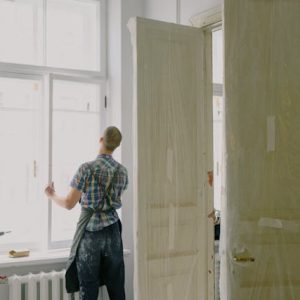Historic homes are filled with character and charm, but they also come with their fair share of challenges. While these properties can be where classic aesthetic meets modern convenience, restoring such a home can be tough because of strict preservation regulations and dealing with old systems and materials.
If you are considering restoring a historic home, it is crucial to be prepared for the unique challenges that you may encounter along the way. Moreover, if you’re planning to purchase such a home, always consult with an experienced real estate agent to avoid potential pitfalls. Let’s go through the most common problems so that you can more easily develop a strategic work plan for your project.
1. Adhering to Regulations and Obtaining Permits
When renovating a historic home, it is crucial to adhere to regulations and obtain the necessary permits. These legal requirements serve to protect the historical integrity and significance of the property, ensuring that any renovations are done in a manner that preserves its unique character and historical value. Attempting to circumvent permits and regulations puts you had your property at risk, legally and physically.
Building regulations often dictate the types of materials, construction methods, and design elements that must be used to maintain the authenticity of the property. Failure to comply with these regulations can result in fines, lawsuits, or the reversal of any unauthorized renovations.
You might have to meet the standards of a preservation board too. Preservation boards help renovate historic homes and are responsible for assessing the impact of proposed renovations on the historical context and architectural integrity of the property. Homeowners must consult with these boards to ensure their renovations align with the home’s history and architecture. This involvement guarantees that any changes made to the property are respectful and consistent with the original design.
Obtaining the necessary permits is equally important, as these documents confirm that the proposed renovations meet the requirements set by local authorities and preservation boards. Starting work missing these permits can result in legal consequences, delays, or even the reversal of completed renovations.
2. Dealing with Structural Issues
Dealing with structural issues in historic homes requires careful assessment and professional intervention to ensure the preservation of the home’s character and historical significance. Age and wear can lead to a range of common structural issues, including foundation settlement, deteriorating masonry, weakened beams, and sagging floors. These issues have to be thoroughly assessed and addressed in order for the home to be safe.
Foundation settlement is a common issue in older homes, and it results from the natural settling of the ground over time. This phenomenon can lead to cracks in the foundation walls or uneven floors. Additionally, failing masonry, such as crumbling bricks or mortar, frequently occurs in historic homes, especially those exposed to harsh weather conditions. Insect infestations or moisture damage are the major causes of weak beams. The compromised beams can jeopardize the home’s structural integrity. Likewise, sagging floors may be caused by joist deterioration or inadequate support.
A careful assessment of these issues is necessary to determine the extent of the damage and the appropriate repairs. For such properties, it’s necessary to work with professionals, such as structural engineers or historic preservation specialists, as they possess the knowledge and experience in these issues and the best ways to remedy them.
Restoring or replicating historical details is equally important to maintain the home’s unique character. Historical details, such as crown moldings, decorative woodwork, or ornate plasterwork, contribute to the historic value of the property. Reproducing these details requires skilled craftsmen who can accurately replicate the original workmanship, ensuring that the home’s historical character is preserved.
3. Restoring or Replacing Historic Features
Restoring or replacing historic features is one of the most important aspects of any historic home renovation project. It involves carefully preserving the original character and design of the home while updating it with modern conveniences.
One of the first steps in this process is identifying the historic features that need to be restored or replaced. This runs the gambit of home elements including flooring, windows, doors, and architectural details such as moldings, cornices, and trim. These features often suffer from years of wear and tear, and restoring or replacing them is highly important to the authenticity of the home and homage to its history.
During the restoration process, using materials that closely match the originals is important. For example, if the original flooring was hardwood, replacing it with the same type of wood is recommended. Working with a specialized roofing contractor can also ensure that the roofing materials and methods used align with the historic character of the home.
4. Updating Systems without Compromising Historical Integrity
Updating systems, like plumbing and electrical, in a historic home can often be challenging. The key is to update the essential systems of the home without imperiling its historical elements.
When updating a historic home’s systems, remember the house’s special architectural features and design so that any modifications are consistent with what was originally intended. For example, during electrical updating, wires, and switches must be hidden in such a way as to not disturb original architectural elements like trims, moldings or other ornamental features.
Modernizing homes without losing historical touches can be done by carefully selecting contemporary fittings and equipment that go well with the existing building style. As an illustration, while renovating plumbing lines might entail the replacement of obsolete pipes –these should be in keeping with the older look.
The seamless integration of modern amenities is necessary for ensuring increased functionality and comfort in old houses while preserving their historical integrity. This can be realized by unobtrusively incorporating technology and modern systems. Smart home technologies such as programmable thermostats or remotely controlled lighting systems can help retain the classical charms of these homes while providing convenience associated with present lifestyles.
5. Balancing Budget and Authenticity
When it comes to managing a project, particularly one with budget constraints, finding the right balance between staying within budget and maintaining authenticity can be a challenge. However, several strategies can be employed to help you achieve this delicate balance.
One cost-effective method is to prioritize the key elements of authenticity that are most important to the project’s overall success. By focusing on these key elements, it’s easier to budget resources effectively. That is, if preserving historical accuracy is a priority, funds can be allocated to more traditional materials or expert consultants, while other less critical elements may be scaled back.
Another strategy is to seek out alternative, more budget-friendly options that won’t sacrifice authenticity. For instance, instead of using genuine antique or vintage furniture in a historical restoration project, high-quality replicas could be used. This way, the project maintains its authenticity and remains within budget constraints.
Additionally, careful planning and extensive research can help identify cost-effective materials and techniques that align with the project’s authenticity goals. For instance, using sustainable materials or repurposing existing resources can help reduce costs without compromising the project’s overall authenticity.
Maintaining authenticity can also be achieved by involving knowledgeable stakeholders and experts throughout the project. Their insights and expertise can help make informed decisions, prioritize authenticity, and identify cost-effective alternatives.
Ready to Restore Your Historical Home
As you’ve already gathered from the article, restoring a historic home can be a challenging yet rewarding experience. From navigating strict regulations to dealing with unforeseen structural issues, the journey of restoring a piece of history is not for the faint of heart. However, the result of breathing new life into a beautiful, historic property is well worth the effort. So, roll up your sleeves, embrace the challenges, and watch as your hard work transforms a piece of the past into a stunning piece of the present.
Author’s byline: Nellia Melnyk is a seasoned professional from Denver with a passion for real estate, DIY, and home design. With extensive experience in the housing industry, Nellia contributes insightful articles across various platforms. Her expertise ranges from historic home restoration to modern home design trends. Connect with her on LinkedIn to follow her latest projects and insights.



